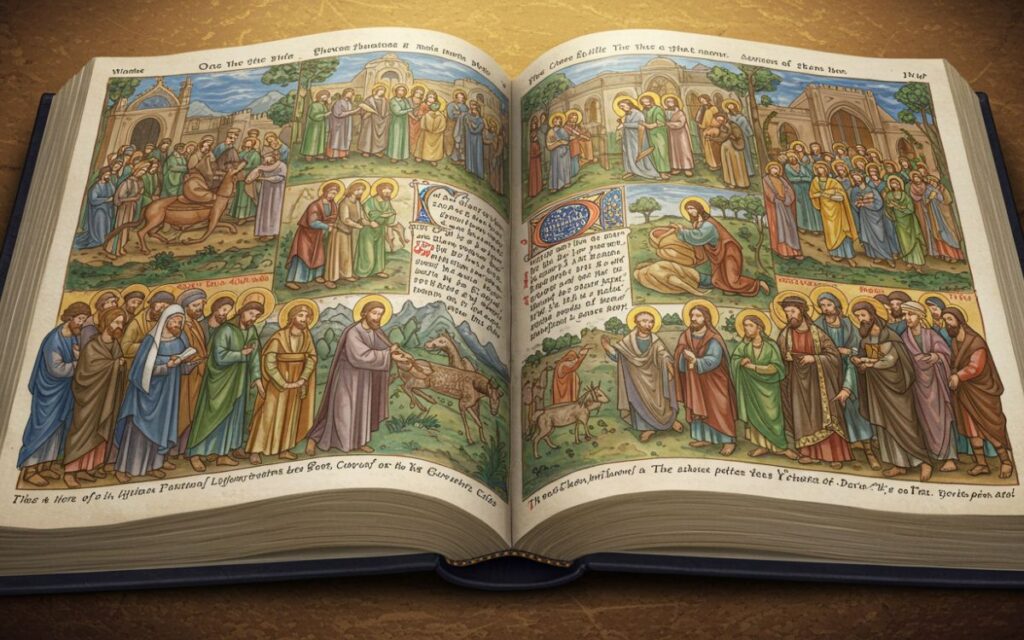It’s a scene most of us have seen at some point—a long table, thirteen men gathered around, one of them at the center, calm yet solemn. This image of Jesus Christ sharing his final meal with his twelve closest followers has left a lasting impression across the world, thanks in large part to Leonardo da Vinci’s painting, which still draws thousands of admirers centuries later.

But the story behind that famous moment, and the way artists have reimagined it, especially in India, is just as fascinating as the painting itself.
The Moment That Changed Everything
The event took place the night before Jesus was arrested. According to Christian teachings, he brought his disciples together in a room in Jerusalem to celebrate Passover, a major Jewish festival. During the meal, he shared some difficult news—one among them would betray him.
In that emotional moment, he also introduced a tradition that remains central to Christianity: sharing bread and wine as symbols of his body and blood, a way for his followers to remember him.
Christians mark this event every year on the Thursday before Good Friday. It’s a moment filled with reflection and remembrance, reminding believers of loyalty, sacrifice, and faith.
Leonardo’s Masterpiece
Painted on the wall of a dining hall in Milan between 1495 and 1498, da Vinci’s mural captures the exact moment Jesus reveals that betrayal is close at hand. The room is quiet, yet every face at the table is full of reaction—shock, confusion, denial.
Leonardo paid close attention to each character, reportedly searching for people whose expressions matched the personality of each disciple. He even looked in prisons for someone who could fit the role of Judas, the one who would betray Jesus.
Unlike typical murals of the time, he used a technique that didn’t last well—his colors were vibrant but started fading soon after. Over the years, many people have tried to restore it. Despite this, the image continues to inspire awe.
There are also many layers in the way he arranged the scene. Jesus sits in the center, forming a triangle, a shape often tied to the idea of unity in Christianity. The disciples are grouped in threes, and even the room’s details follow this pattern. Some people even believe the bread and hand positions could form musical notes.
Judas is shown holding a small bag, thought to be the silver he received for the betrayal. There’s spilled salt in front of him, a possible sign of broken trust.
The Indian Lens
While da Vinci’s painting is the most recognized version, artists in India have also explored this powerful moment in their own style.
Jamini Roy, with his deep roots in Bengal’s folk traditions, gave us a version where the figures have large eyes and flat colors, influenced by the art forms of the region. Christ stands out, facing forward, while the apostles are shown in side profile. His approach brought the story into an Indian visual language.
Krishen Khanna, moved by the painting since childhood, made his own versions over the years. One of his most known works from 1979 places Jesus in a bare room, lit softly, surrounded by followers reacting to the heavy news. The emotion is raw, and the silence feels almost loud.
M F Husain blended his interpretation with symbols from the desert and Arabic culture. In one of his works, a camel watches over the scene, while angels support the table. The bowls are empty, adding a sense of anticipation and silence.
F N Souza took a darker turn in one of his depictions, with bold contrasts and intense expressions. In later years, his figures became more abstract, their faces twisted in different shapes, dressed in modern suits, blending past with present.
New Voices, New Messages
In recent years, artists have used this moment to speak about issues far beyond religion.
Arpana Caur, during the pandemic, created a version that reflected the damage humans have caused to nature. Her table is set in a concrete jungle, surrounded by lifeless birds and fallen trees. It’s a quiet reminder of loss and neglect.
Madhvi Parekh added her own touch through reverse glass paintings full of color and energy. Jesus is larger than life, surrounded by a sea of details. Inspired by her travels and her own imagination, her pieces glow with both tradition and originality.
Vivek Vilasini used photography to recreate the famous scene in two unique ways—once with Kathakali dancers sharing a meal in Kerala style, and again with women in burqas at a table, their eyes expressing unity and unease. These versions speak of tradition, community, and the state of the world.
Jagannath Panda took an entirely different angle—literally. His circular canvas shows Jesus and the apostles looking down, as if they’re watching us from the sky. It turns the painting into a moment of reflection for those below.
The Last Supper isn’t just a scene from the past. It keeps speaking to us, across centuries and cultures. Each version adds something fresh—new colors, new faces, new meaning. From Renaissance Italy to modern Indian studios, this single moment continues to live on, reminding us of what it means to be human, to be loyal, and to face the truth.